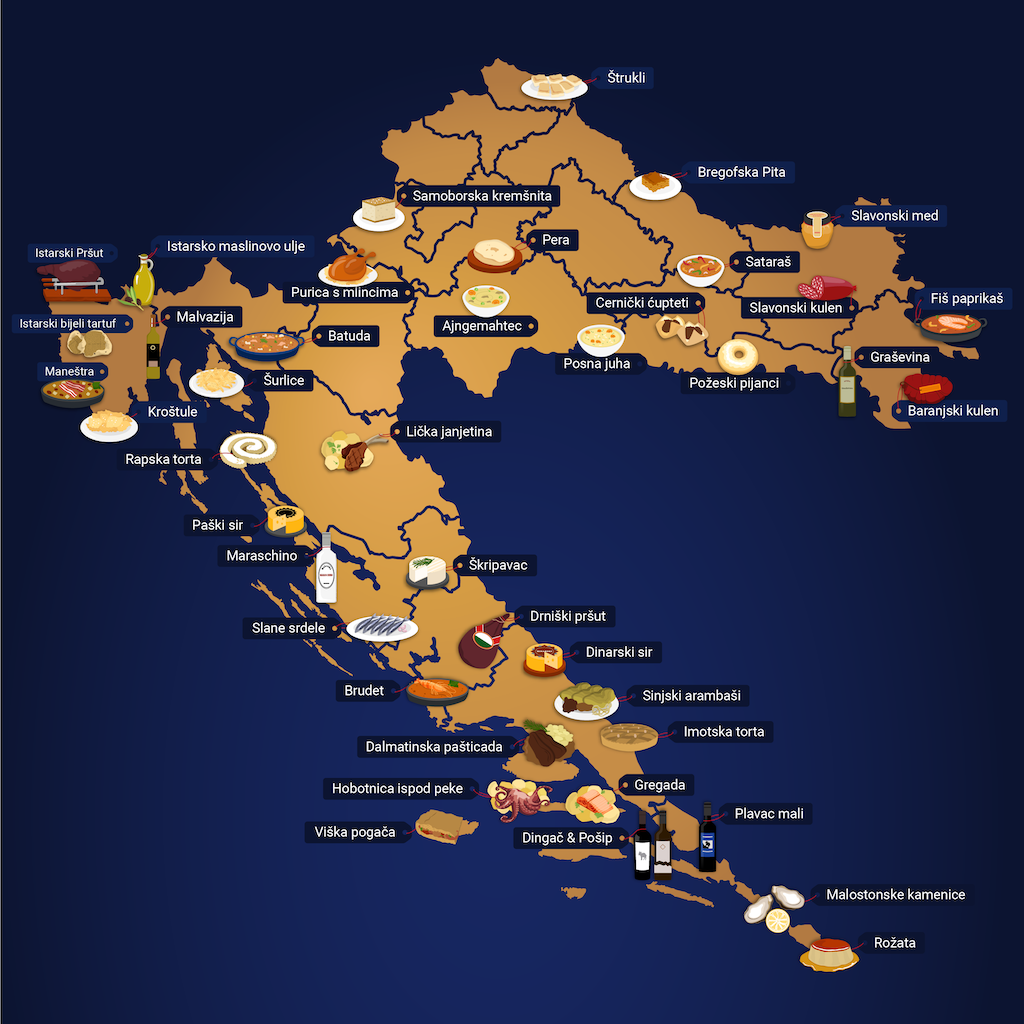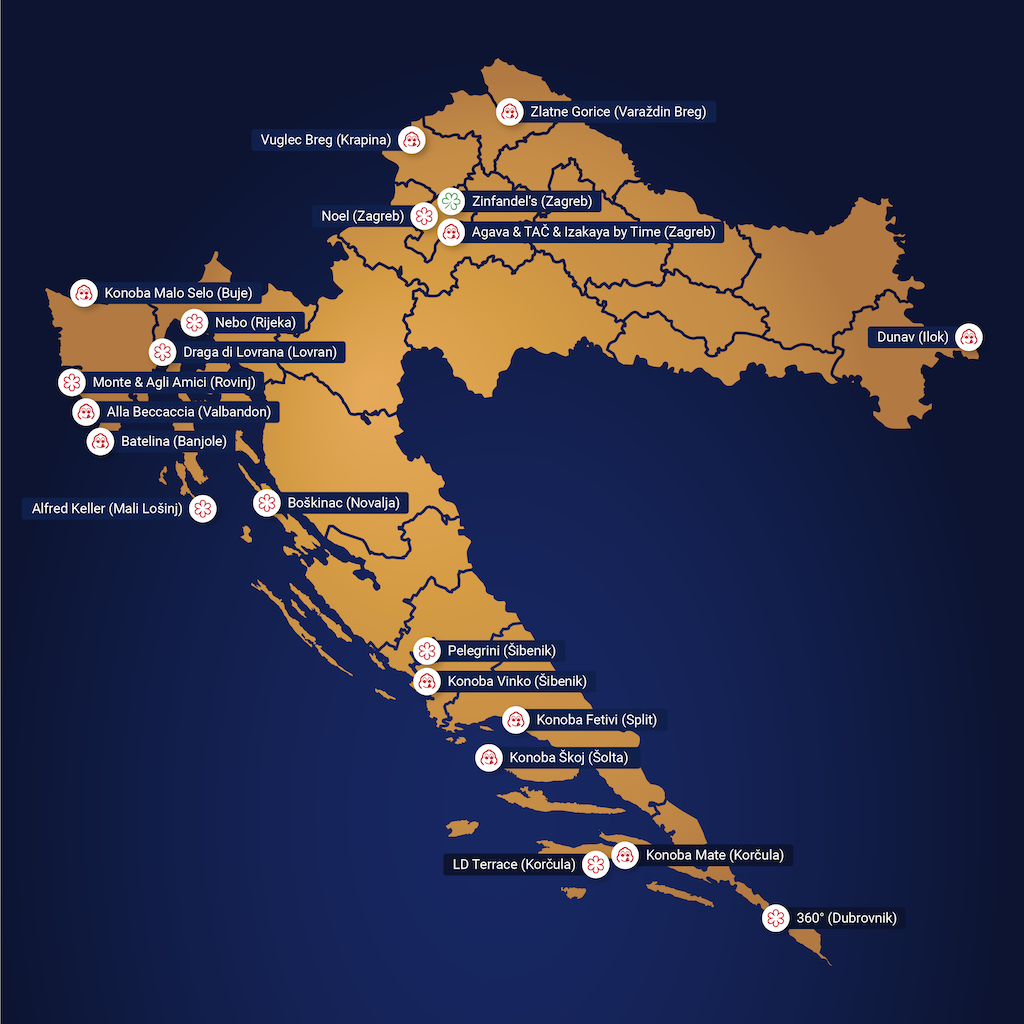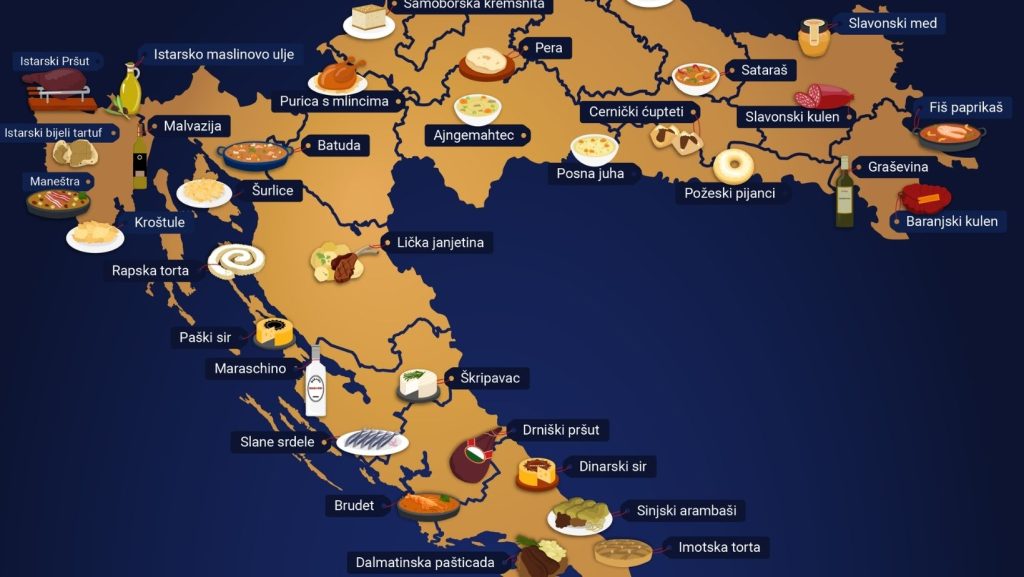As Croatia Luxury Rent reports, Croatia has a heterogeneous and regional cuisine in which each part of the country has its own culinary tradition. And given Croatian history, the regional cuisines often resemble the styles of other countries, some of which have long since ceased to exist.
The influence of antiquity, Illyrians, Mediterranean cuisine, and Italian, French, Viennese, and Hungarian can be felt on the Adriatic. Austro-Hungarian cuisine sends greetings from continental Croatia, as does Turkish.
While you’ll find mostly fish, seafood, fruits, vegetables, and olive oil on the coast and islands, in continental Croatia, you’ll find more meat, grains, fruits, vegetables, eggs, and dairy products – and the preparation methods are more complex and dishes more nutritious. Both cases boast seasonal cuisine.
Croatian regional cuisines are divided into Istria, Dalmatia, Dubrovnik, Lika, Zagorje, Međimurje, Podravina and Slavonia. Each region has its own specialties, which are not always so well known to everyone at the national level.
So, what is the DNA of a Croatian kitchen? What are Croatian specialties? What makes them unique? Who are the pioneers of Croatian gastronomy? What is the future of Croatian cuisine? Which restaurants are especially worth visiting?
To that end, Croatia Luxury Rent spoke with industry leaders and restaurants.
Despite all the influences, there are many Croatian specialties that you will not find anywhere else except in Croatian regions, and there are also dishes you may not have heard about!

Sinj arambaši: Arambaši – a traditional dish from the Croatian town of Sinj – is an unusual variant of sarma and consists of a combination of minced beef, onion, garlic, pork belly, and parsley. The mix is usually seasoned with pepper, salt, cloves, cinnamon, nutmeg, and grated lemon zest.
This mixture is then wrapped in sauerkraut leaves and placed in a pot. Before cooking, arambaši is covered with chopped sauerkraut, beef bones, tomato juice, water, and various dried meat products. The dish’s name comes from the Turkish words ‘harami’, which means sinful or unacceptable, and ‘başi,’ which implies commander or chief. It is traditionally served at festivities such as Easter or Christmas, but arambaši are especially popular during the Feast of the Assumption and the popular Sinjska Alka.
Požeski pijanci: Pijanaci is a traditional cake originating from the town of Požega. The cake is made of flour, eggs, yolk, lard, and sugar. The dough is cut into pieces that are shaped into coils with a hole in the middle.
After baking, the tops are dipped in egg whites and sugar and then dry in the oven.
In the past, pijanci were traditionally consumed in the afternoon while drinking wine with friends and neighbors, and the cakes were soaked in wine, hence the name!
Šurlice sa škampima: This specialty originates from the Croatian island of Krk. It consists of a local variety of pasta known as šurlice, combined with onion, garlic, shrimp, tomato juice, white wine, and stock. The pasta is sometimes sautéed in butter before being combined with the other ingredients. It is recommended to supplement the dish with grated cheese before serving.
Learn more about how experts or the kings and queens of Croatian specialties see their products and work, and what makes Croatian cuisine so unique HERE.
Croatian restaurants are impressive, as well. Not only did Croatia receive three new Michelin-starred restaurants last year, but the country also has several Bib Gourmand restaurants and one Michelin Green Star restaurant for exceptional sustainability.

1 Michelin star:
- 360⁰, Dubrovnik
- Draga di Lovrana, Lovran
- Monte, Rovinj
- Pelegrini, Šibenik
- Noel, Zagreb
- Boškinac, Novalja
- LD Terrace, Korčula
- Agli Amici, Rovinj
- Alfred Keller, Mali Lošinj
- Nebo, Rijeka
Bib Gourmand:
- Batelina, Banjole
- Dunav, Ilok
- Konoba Mate, Korčula
- Vuglec Breg, Krapina
- Konoba Vinko, šibenik
- Konoba Fetivi, Split
- Agava, Zagreb
- TAČ, Zagreb
- Konoba škoj, šolta
- Zlatne Gorice, Varaždin Breg
- Izakaya by Time, Zagreb
- Konoba Malo Selo, Buje
- Alla Beccaccia, Valbandon
Michelin Green Star:
- Zinfandel’s, Zagreb
You can read more about Croatia’s haute cuisine in an interview with LD Restaurant’s Marko Gaski HERE.
For more, make sure to check out our dedicated lifestyle section.









